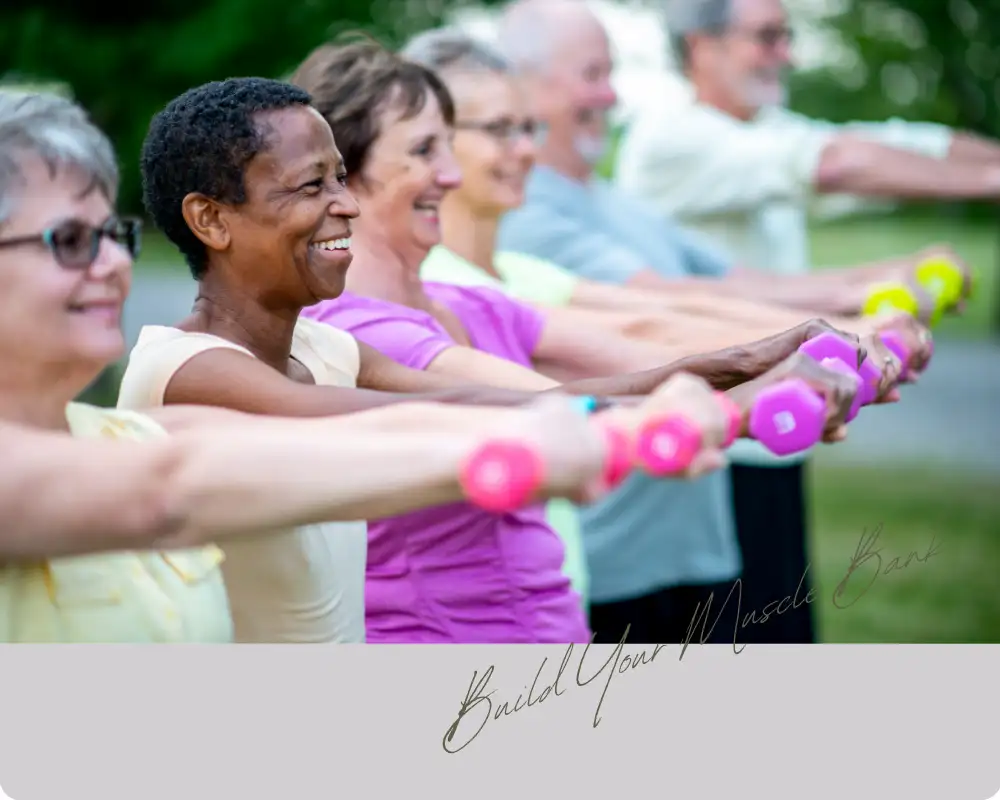Gracefully Aging: Accumulating Your 40+ Strength Account

Translated by AI
Confucius aptly stated, "At forty, I had no doubts." The age of forty marks a watershed moment in life's latter half, where experiences culminate in wisdom and stability emerges. Yet, it equally signals the onset of physiological decline, marked by noticeable reductions in strength and vigor, invoking a sense of powerlessness. An article published in Nature Aging in August 2024 highlighted that "human functional decline isn't linear but abrupt," particularly at ages 44 and 60.
Research indicates that, regardless of gender, post-30, levels of the hormone DHEA (dehydroepiandrosterone), essential for maintaining physiological health, begin diminishing, halving by 40. DHEA, regarded as the "mother hormone," converts into male and female hormones, with male hormones linked to skeletal muscle synthesis. As aging occurs and DHEA decreases, muscle mass simultaneously declines. Intentional training becomes paramount to sustain muscle strength.
Combat Sarcopenia: Initiate Muscle Training Now
Sarcopenia has emerged as a significant health concern among those over 40, manifested as a degenerative phenomenon accompanying aging. Loss of skeletal muscle with age can lead to inadequate muscle mass, insufficient strength, and impaired functionality, influencing mobility.
The good news: it's always the right time to cultivate a "strength account" and reinforce the "muscle foundation." Regular exercise strengthens muscles, sculpts the body, enhances balance, preserves bodily functions, and prevents osteoporosis. Whether new to fitness in your 40s, 50s, or beyond, training should be "comfortable," "sustainable," and "unrestrained by time or equipment," fostering a lifelong fitness habit paving the path for graceful aging.
Stretching: Cultivating Flexibility and Stability
Sedentary lifestyles, inactivity, late nights, and diets rich in sugar and fat render muscles stiff and inflexible, making training especially arduous. For those experiencing tightness or pain, stretching is the recommended initiation. Early stages of limited strength or mobility find walls, chairs, and cabinets as excellent aids. Here are three straightforward stretching exercises:
Chest and Upper Back Stretch: Essential for those frequently experiencing chest tightness! Standing within a door frame, arms extended on either side, take a step forward, relaxing the body. Utilize forward leaning to open the chest, feeling shoulder blades converge. Hold for 3-5 deep breaths, repeating 4-5 times.
Back and Waist Stretch: Engage in the yoga "Child's Pose". Kneeling on the ground with hips resting on heels, gradually extend forward, aligning chest, abdomen, and thighs. Pair with breathing, exhaling to relax and allow hips to lower onto heels, pushing hands further forward, achieving profound waist and back stretches.
Leg Stretch: Replicate the yoga "Standing Forward Bend." With feet shoulder-width apart or together, bend forward, keeping knees slightly bent, bringing the abdomen closer to thighs. Beginners may encounter intense stretching sensations: this maneuver extends muscles and mirrors an inversion effect, enhancing blood circulation.
Stretching bolsters flexibility, stability, and vascular health while accelerating metabolism. They serve as cooldown activities post-exercise or warm-ups and are also beneficial during rest periods.
Stationary Super Slow Jog: Bolster Cardiopulmonary Capacity and Strength
Engage rhythmically in consistent hand-leg movements for beneficial exercise outcomes! Stationary super slow jogging excels as feet need not fully lift off the ground, catering to those with compromised knees or diminishing stamina. By cultivating rhythmic motion paired with intentional breathing, even this gentle exercise progressively elevates cardiovascular capacity and strength—a great starting point for those with low muscle reserves. Aim for 30-minute sessions, tailoring intensity based on personal situational needs.
Wall Push-Ups: Accessible for Those with Limited Arm Strength
This upper-body exercise focuses on the pectoral and arm muscles. Stand facing a wall, hands placed against it, feet shoulder-width apart, with slightly bent elbows. Lean towards the wall, utilizing arm and chest strength to return to the original stance. Adjust difficulty based on strength level by modifying the distance from the wall—closer facilitates ease, while farther increases challenge. Tables serve as alternatives when walls are unavailable.

Wall-Assisted Squats: Cultivate Knee Resilience
A variation of traditional squats targeting core, thigh, and surrounding knee muscles requiring just a wall. Align your back against the wall, feet shoulder-width apart, taking a step forward (allowing room to squat against the wall). Delicately sink into a squat, ensuring thighs and knees form at least a 30-90 degree angle. Pause for 10 seconds, rise, and repeat 10-15 times, thrice daily. Safeguard knee joints by ensuring knees don't extend over ankles; modify squat depth for knee comfort.

These exercises offer beginner-friendly fitness recommendations; however, individual physical variances necessitate flexible adaption to avoid injury while pursuing fitness ambitions.










